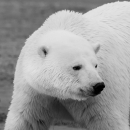In the summer of 2022, the U.S. Fish & Wildlife Service and partners successfully completed the first single-year, aerial photo survey of sea otters across the entire Southeast stock of northern sea otters. This document presents the latest findings from the 2022 Southeast Alaska Sea Otter Survey, providing up-to-date information regarding occupancy, abundance and carrying capacity. We collected two independent data streams of sea otter observations during the survey using novel image sensor technologies for marine wildlife surveys and recently developed statistical methods. We calculated an abundance estimate of 22,359 (95% Bayesian credible interval: 19,595, 25,290, CV = 0.064) sea otters. Based on these results, the population size of the Southeast stock of northern sea otters is still increasing and below the estimated carrying capacity for the region of 48,083 (95% Bayesian credible interval: 40,575, 58,570) sea otters. Results from this report include the first updated abundance estimates for the Southeast stock of sea otters in 10 years, which will help inform stakeholders from across the region and addresses the top priority identified by the 2019 Southeast Sea Otter Stakeholder Working Group.
Publication date
Type of document
Report
Facility
Program
Species
FWS Focus
Ecosystem



